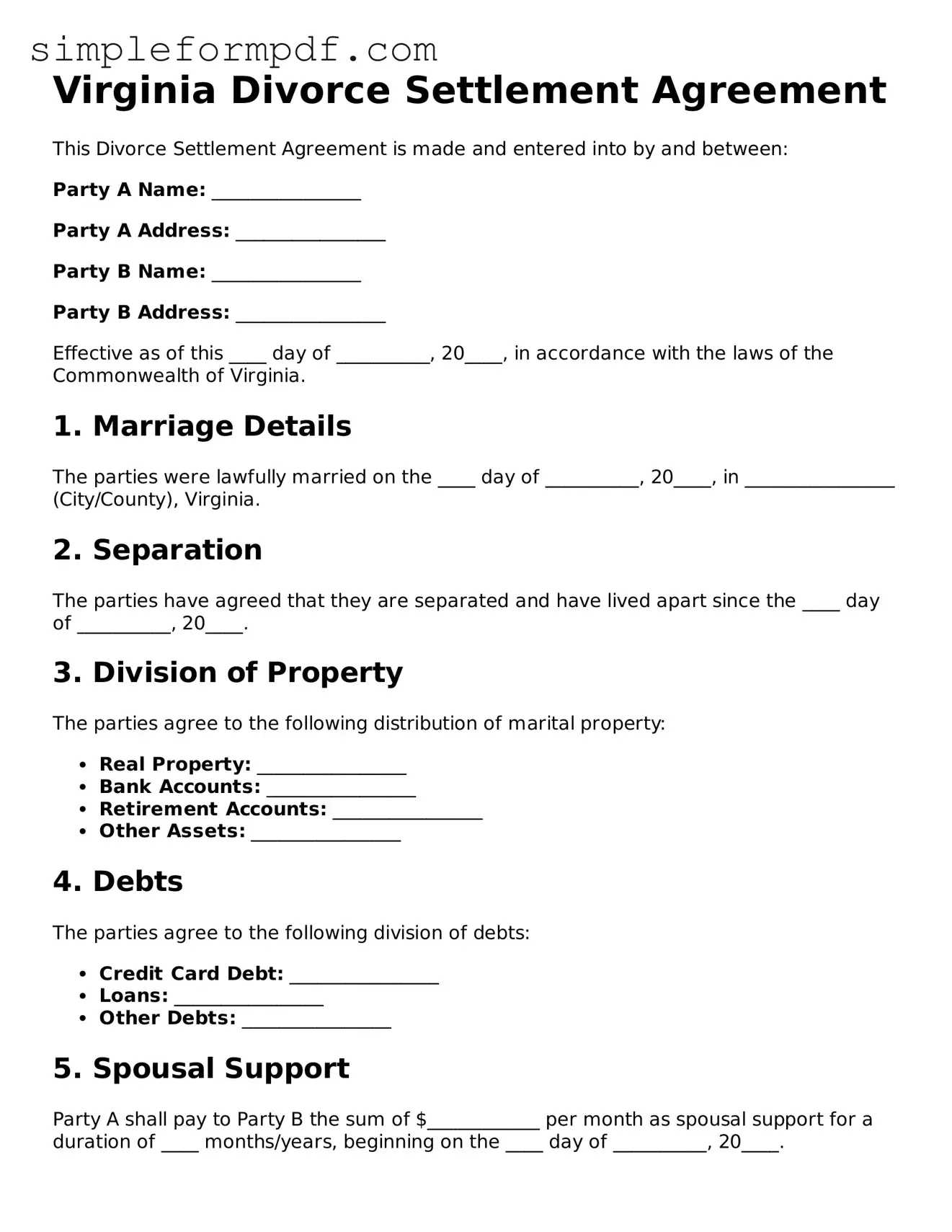Virginia Divorce Settlement Agreement
This Divorce Settlement Agreement is made and entered into by and between:
Party A Name: ________________
Party A Address: ________________
Party B Name: ________________
Party B Address: ________________
Effective as of this ____ day of __________, 20____, in accordance with the laws of the Commonwealth of Virginia.
1. Marriage Details
The parties were lawfully married on the ____ day of __________, 20____, in ________________ (City/County), Virginia.
2. Separation
The parties have agreed that they are separated and have lived apart since the ____ day of __________, 20____.
3. Division of Property
The parties agree to the following distribution of marital property:
- Real Property: ________________
- Bank Accounts: ________________
- Retirement Accounts: ________________
- Other Assets: ________________
4. Debts
The parties agree to the following division of debts:
- Credit Card Debt: ________________
- Loans: ________________
- Other Debts: ________________
5. Spousal Support
Party A shall pay to Party B the sum of $____________ per month as spousal support for a duration of ____ months/years, beginning on the ____ day of __________, 20____.
6. Child Custody
If applicable, the parties agree to the following child custody and visitation arrangements:
Children's Names: ________________
Custody Arrangement: ________________
Visitation Schedule: ________________
7. Child Support
Party A shall pay Party B the sum of $____________ per month as child support, commencing on the ____ day of __________, 20____.
8. Other Considerations
The parties hereby agree to any additional terms:
______________________________________________________
9. Signatures
By signing below, both parties acknowledge and agree to the terms outlined in this Divorce Settlement Agreement.
Party A Signature: ____________________________ Date: ________________
Party B Signature: ____________________________ Date: ________________
This document reflects the mutual agreement of the parties. Both party A and party B confirm that they understand the terms and effects of this document.
Notary Public (if required):
_________________________________
